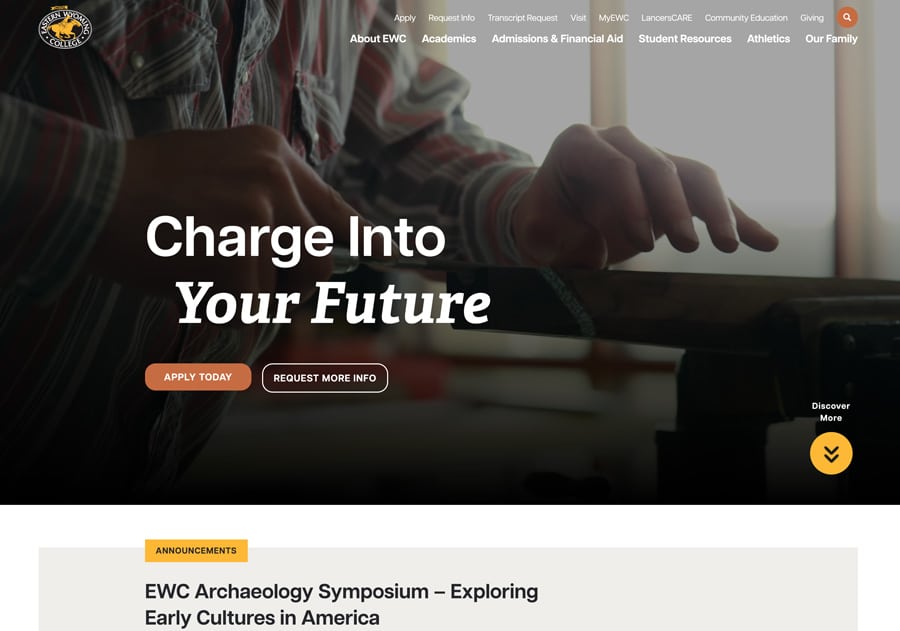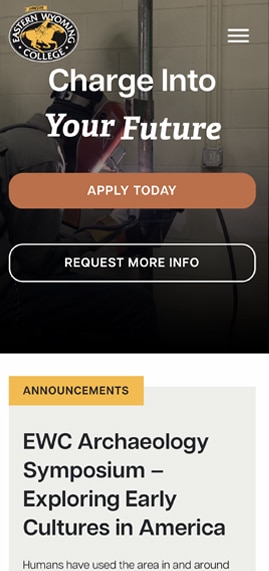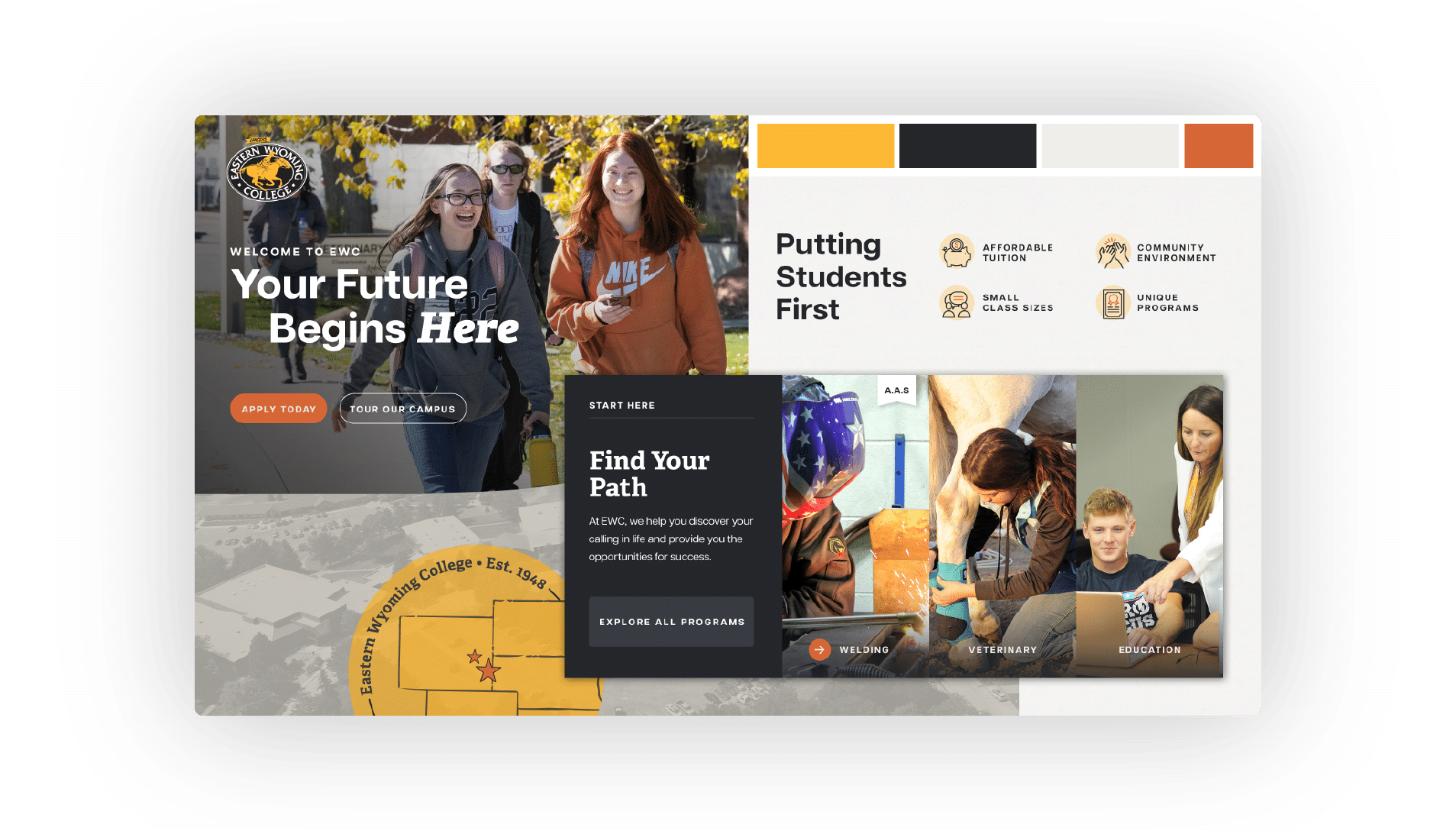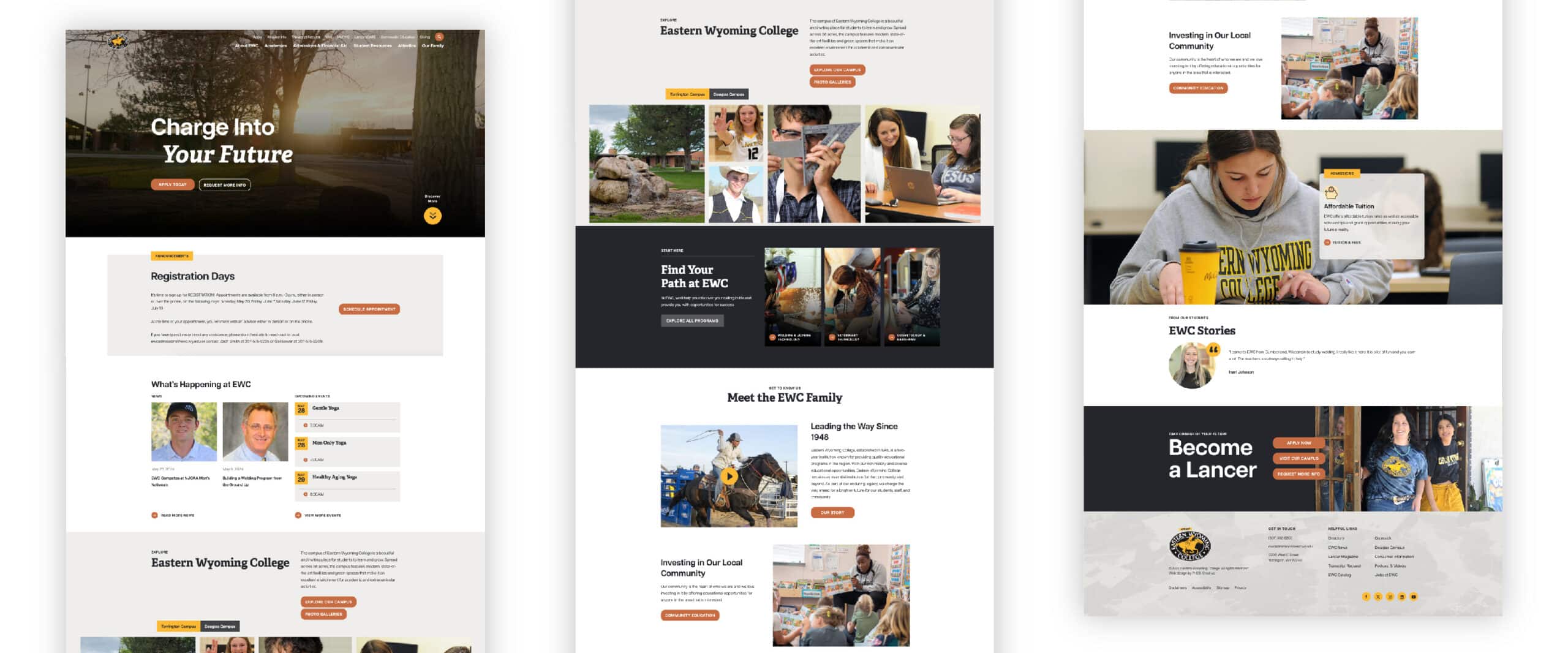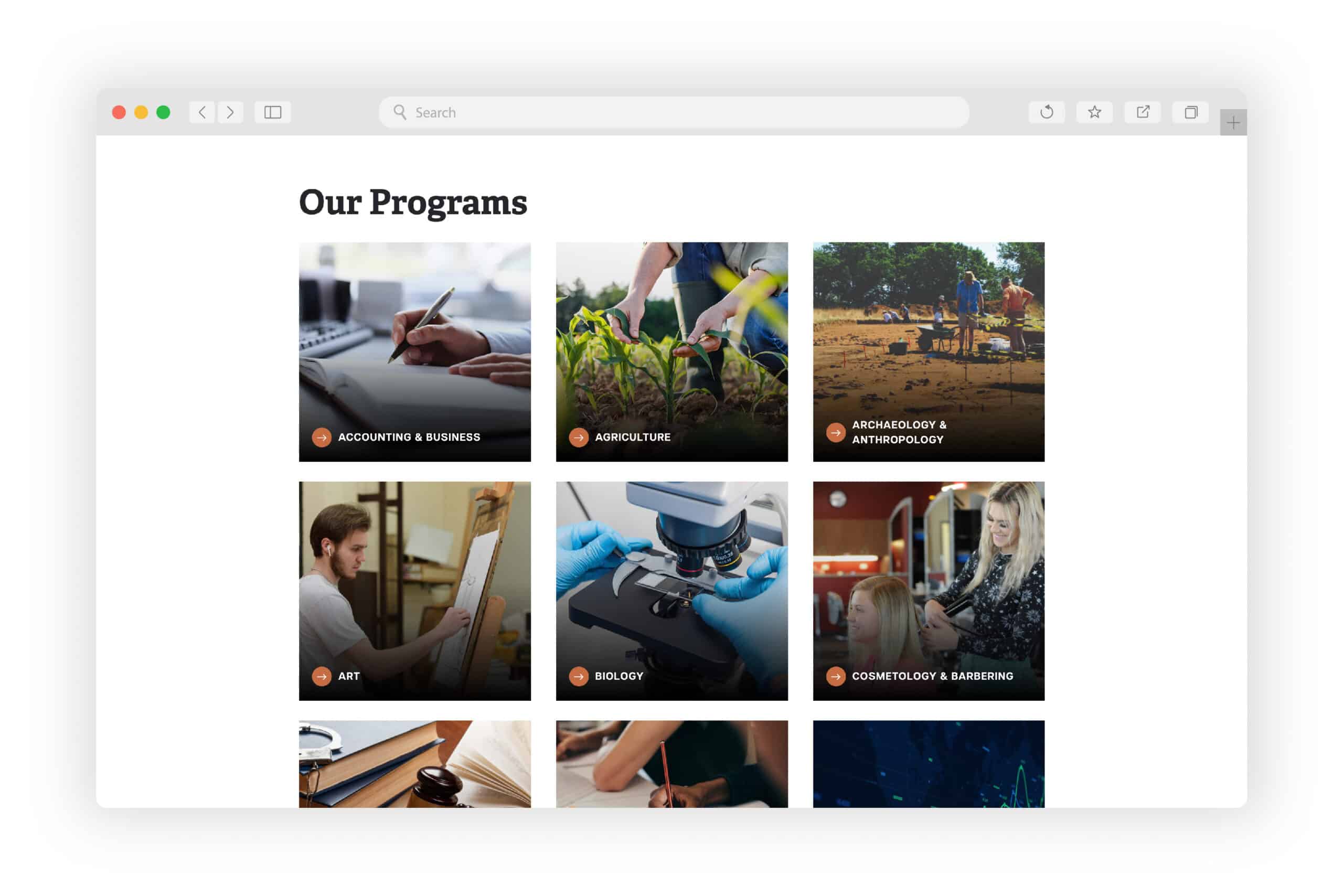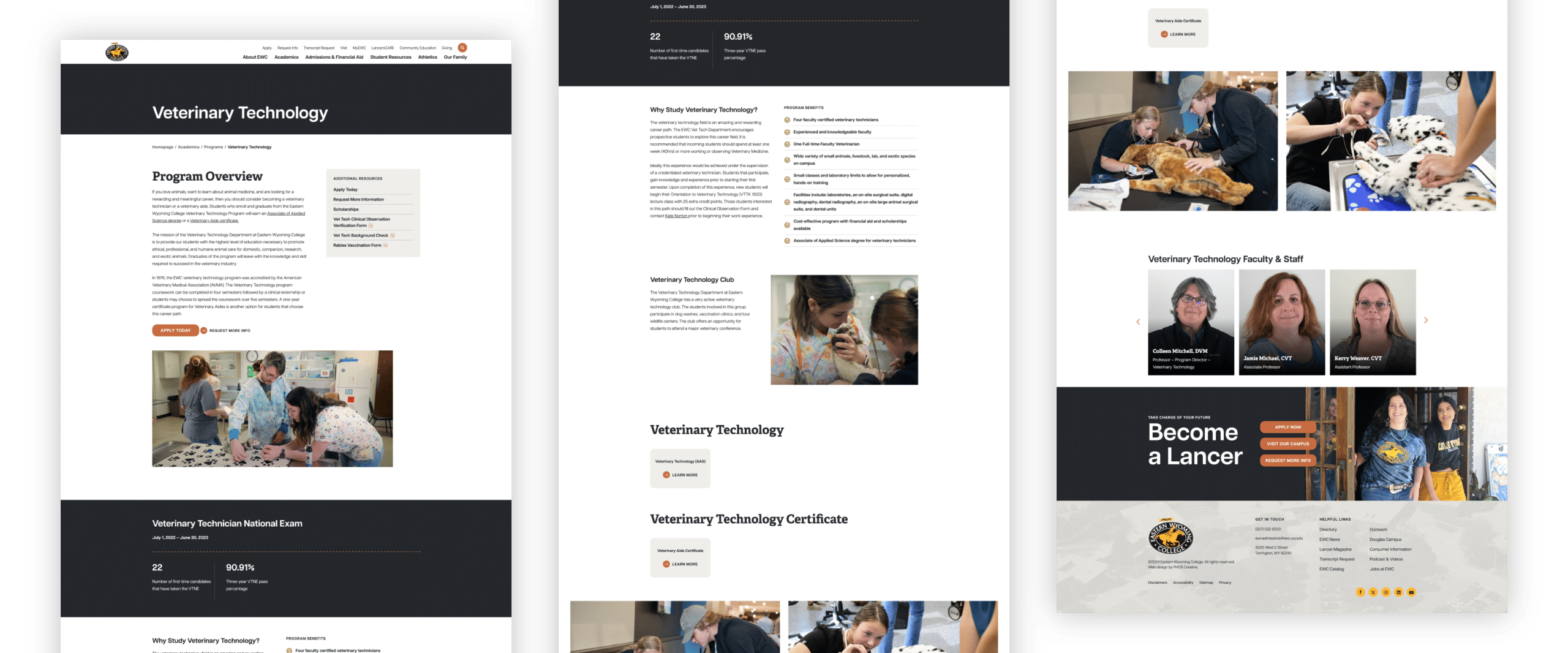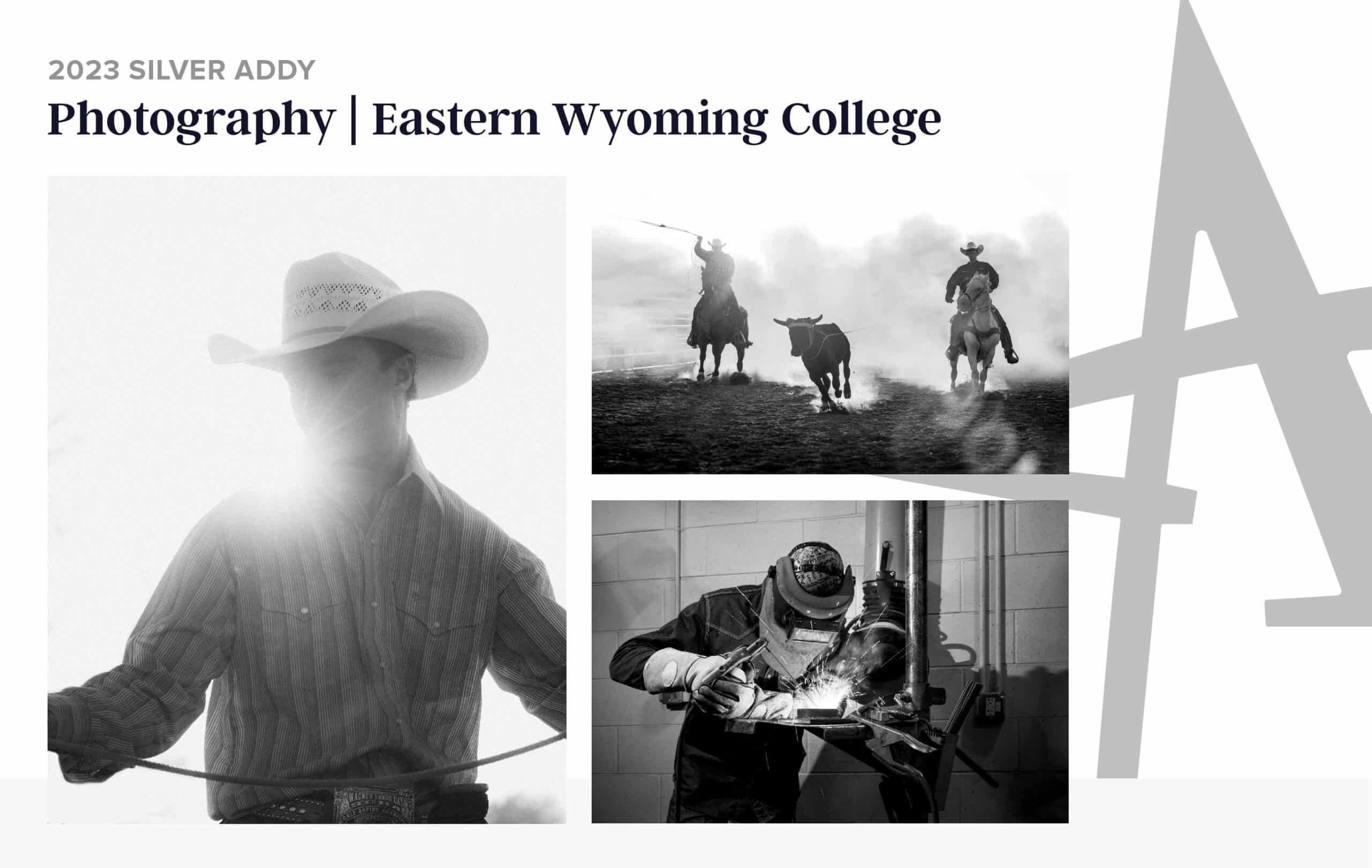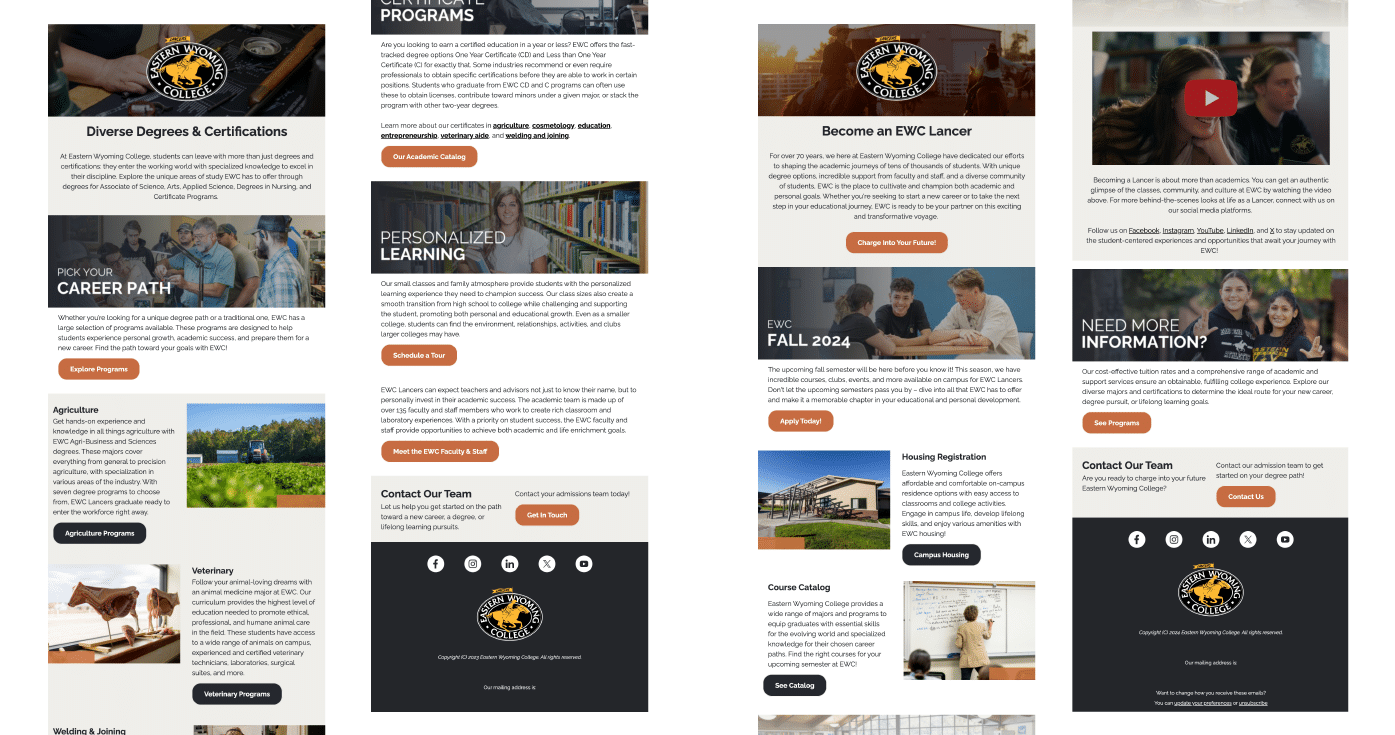Our Vision
Our team was excited to partner with EWC to transform their online identity and showcase the college’s unique spirit and offerings to potential students. Additionally, we were eager to create a website that current students and faculty could easily navigate.
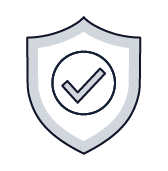
Trusted
For any higher education institution, showcasing expertise and unique value was important. We needed to make sure that EWC was memorable and distinct in the minds of prospective students.

Functional
Having a website that anyone could easily navigate and use was essential for all user groups, including potential students, current students, faculty, and staff.

Welcoming
EWC needed to share their professionalism as an institution but also wanted to showcase their heart for their students. We wanted to create a welcoming experience that invited each user into EWC’s family.
